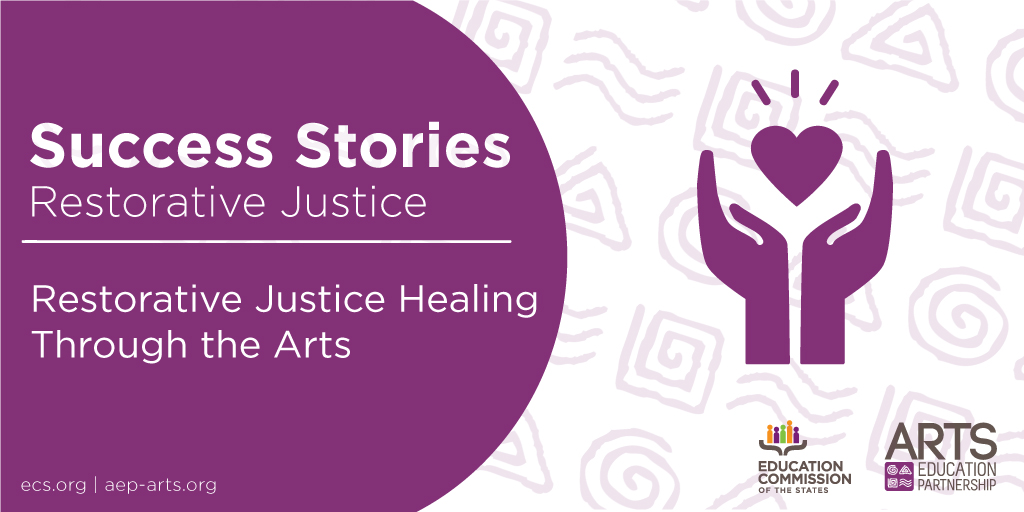Restorative Justice Healing Through the Arts

In 2019, Arts Education Partnership (AEP) began its arts and juvenile justice work with the goal of understanding the role of the arts in juvenile justice spaces and how the work could expand. AEP is now expanding its focus to restorative justice and the arts focused on healing. Restorative justice seeks to acknowledge the impact of harmful practices and creates opportunities to heal that harm between those who enacted it and those impacted by it to transform the community.
We are beginning this work by sharing out success stories from organizations in the field that are utilizing the arts for their restorative justice programs or initiatives. The series will share success stories from restorative justice practices that utilize student arts experiences in schools, communities, within juvenile justice detention facilities or as an alternative to juvenile justice detention. We are interested in learning more about how to sustain meaningful arts education opportunities that focus on necessary conditions for success, stakeholder engagement and insights into implementation. This includes considerations related to approaches in programming, funding, policy or advocacy actions and coordination of key figures throughout communities and across agencies.
The stories in this series are human-centered, highlighting experiences of mutual healing. They not only focus on the healing that young people experience from participating in the programs, but also on how that healing is grounded in community and the additional supports the program offered.
Over the past few years, AEP has followed federal policy changes that support potential funding for this type of initiative or program. The fiscal year 2022 funding bills included instructions (Page 131) for the Office of Juvenile Justice and Delinquency Prevention (OJJDP) to create an Arts in Juvenile Justice demonstration program. The purpose of this program is “to provide grants to partnerships between arts organizations and juvenile justice systems, programs and nonprofit organizations [and] to pilot promising and effective art-based and art therapy models for youth at-risk of or engaged with the juvenile justice systems.”
The funding bills for fiscal year 2023 included updated instructions (Page 131) for the Juvenile Justice demonstration program:
“The Department is to continue to develop the Arts in the Juvenile Justice Demonstration Program as described in fiscal year 2022. In addition, OJJDP is encouraged to prioritize applications with arts partners who have prior experience in serving youth who are engaged, or at risk of engaging, in the juvenile justice system as well as partnerships developed through authentic collaboration with young people who have lived expertise or experience. The Committee directs OJJDP to provide a report not later than 180 days after the date of enactment of this act on the use of funds, grant recipients, and project purposes for fiscal year 2022 as well as plans for fiscal year 2023 funds including expansion of the program and creation of best practices to replicate these kinds of partnerships.”
With funding opportunities available across the states, as you follow the series, we ask that you reflect on your individual role in this work and consider the following questions:
- What alignment do I notice with these shared experiences in my own work?
- How can these practices transfer to my current or upcoming work or a peer’s work?
- If I am doing work in this space, what contribution could I add to this series? If I am not, then do I have someone in my network who could contribute?
Are you interested in sharing your arts and restorative justice work for a future success story? Let’s connect! Please reach out to AEP policy analysts Krystal Johnson or Cassandra Quillen to share your story.



